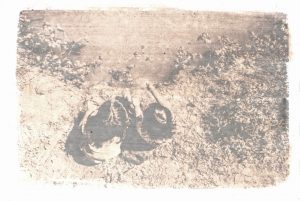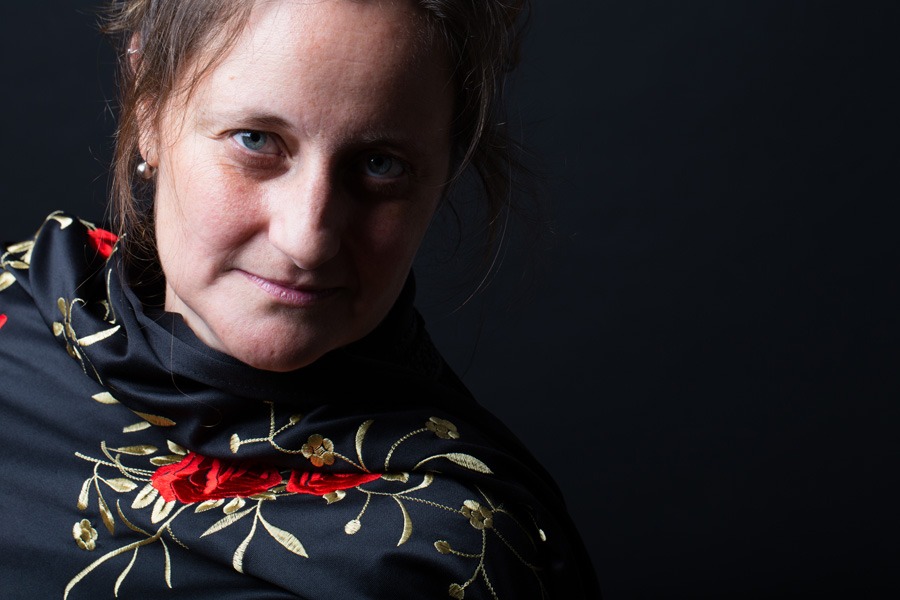São Paulo – Brazilian photographer Dani Sandrini is finishing the arrangements for her exhibition “Terra Terreno Território,” which pictures native people in the city of São Paulo, but also works on putting together pictures she took in Jordan, which she intends to make into a photo exhibition next year. Dani Sandrini lives in São Paulo, but since the 2000s, when she spent a season in Aman, where she would live years later, her history with photography is like this: between Brazil and Jordan.
She got a degree in Communication but built a career mixing photography, arts and education – and most recently psychanalysis. Her early years as a photographer were dedicated to theater and cinema, whether it was taking pictures of plays or creating sets, taking care of art and photograph direction. Educational projects came soon after, most of them developed with social organizations, where she used photograph to work on topics such as citizenship, belonging and others.
“I’ve never worked in one thing only,” she told ANBA, saying she has also taken commercial pictures for corporate events, weddings, studios and magazines. In parallel, she developed her personal projects, which are the pictures for exhibitions within her interests. One of her first projects, showed what is beautiful in Glicério, a neighborhood in downtown São Paulo famous for its problems.

Her ties with Jordan started in 2000, when Dani Sandrini decided to backpack around the Middle East. Her first destination was Israel, then Egypt and Jordan, where she stood for a while. “I felt a deep connection with Jordan,” she says. She spent a year and a half coming and going from Europe to Jordan, until she married a Jordanian man and came back to Brazil. “But we often visited Jordan,” she said.
In 2010, the couple moved to Aman, where she started establishing her local career. Dani worked for an architecture and decoration magazine, took family pictures, made photo books, and taught photograph classes. She became a widow and came back to Brazil in 2012. The Image Festival in Aman made her go back, and her photograph work won the first prize in 2015. The theme was “Together,” and Dani took pictures of a Brazilian woman alone in the train, supposedly waiting for someone, saying goodbye our going to meet someone.
The selection for the festival also provided for the development of a work in Jordan and she created “Fragments of a comeback.” She photographed places related to her affective memory in the country and, after revealing the photos, she hanged them on walls around Aman. After a while, she took pictures of the hanged photos, with the interferences they had gone through. The exhibition in the festival featured pictures of Dani’s photos with sand, spilled coffee, tears and other interventions. Later, the pictures were exhibited twice in Brazil.
In her trip to Jordan in 2015, the photographer put together another project, which she expects to make into an exhibition next year. Dani Sandrini called it “Souvenir Poético” (Poetic Souvenir) since she took 37 requests from acquaintances in Brazil about what they’d like to learn about Jordan. If they were curious about the families, she photographed them; if it were about the lights, she photographed them too; if it were about the writings, she photographed them. Streets and souks? She photographed. This material is now being organized to become an exhibition, perhaps in São Paulo, in 2020.

The show on Jordan will probably become her priority as soon as she opens the exhibition “Terra Terreno Território,” which brings images of the Guarani settlements remaining in the South and West Zones of São Paulo. The exhibition will open on October 5 at Mario de Andrade Library in São Paulo. The photos were printed in papers touched by the pigment extracted from the jenipapo, which native peoples use in their body paintings, and plants. The show runs until December 13.
Over the last six years, Dani Sandrini devotes herself mainly to her personal projects, although she still takes commercial pictures and teaches classes. She also added a degree in psychanalysis to her career. She gives therapeutic treatment to patients. Occasionally Dani uses photograph as a resource for her job as a psychanalyst. “In psychanalysis, we talk often about the unsaid. We talk without saying things. The same happens in photography. Besides the obvious stuff a picture shows, it also talks about something that is not explicit but is there somehow,” she says.
Dani Sandrini still doesn’t know when she’ll return to Jordan, which she feels a special connection to. “But every time I think about going overseas, I think, I’ll pass by Jordan,” she said. The 2020 exhibition on the Arab country, “Souvenir Poético,” still has no defined date or sponsorship.
Contact info:
Photographer Dani Sandrini
Website here – Phone: +55 (11) 99432-7933
Translated by Guilherme Miranda




